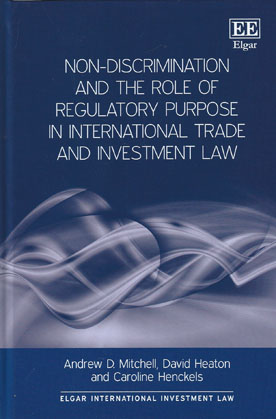
Non-discrimination requirements, such as most-favored nation and national treatment obligations, are central to both international trade law and international investment law.
Significant inconsistencies between the fields are evident, however, in the way adjudicators have treated key elements of the test for discrimination. This book surveys and criticizes the manner in which tribunals have employed the concept of regulatory purpose in determining whether discrimination has occurred.
The authors of this book propose a new definition of regulatory purpose that assists in framing the test for unlawful discrimination in both fields of law. It provides a systematic and structured analysis of how regulatory purpose should—and should not—be used in applying non-discrimination norms.
Throughout, the book compares and contrasts trade and investment law, drawing out several parallels and suggesting areas in which one legal system might answer or shed light on questions arising in the other.
With its comprehensive and up-to-date analysis of trade and investment jurisprudence, this book will appeal to practitioners and academics in the fields of trade and investment law. Lawyers and adjudicators will find it a useful source of ideas and proposals to inform their arguments and decisions.
For Government officials, it will be informative when considering the optimal way to structure measures that may affect the interests of foreign traders or investors. It will also provide a useful survey of the literature for academics, as well as a springboard for further comparison of international trade and investment law.